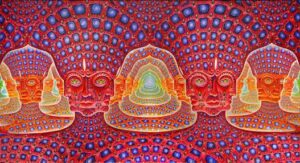Recognising the signs of drug use during festival season

With festival season in full swing, drug use is unfortunately very prevalent. That’s why Addiction Specialist Martin Preston, has issued a warning for festival goers “to be extra vigilant and be able to identify the signs early on, before a hazard takes hold.”
Martin, Founder and Chief Executive at Private Rehab Clinic Delamere has shared some tips on how to recognise the signs of drug use at a festival in order to ensure safety before it’s too late. Early invention is essential to ensure the most robust chances of successful recovery.
Marijuana
If someone has used marijuana, they could seem in a euphoric state, but they might also seem uncoordinated and forgetful. Since cannabis increases appetite, the person may eat more than usual. Reactions may be slower, and the user may also become paranoid and suspicious. Those who have smoked marijuana often appear with bloodshot eyes, droopy eyelids, and an overall relaxed or mellow demeanour.
Stimulants
If someone has taken stimulants such as cocaine, they may exhibit frequent behaviour changes, aggression, or rapid or rambling speech. They may display dilated pupils, increased energy, and a fast breathing rate. In some cases, users may become paranoid or hostile. If users snort the drug, nasal congestion is a common sign of use. Taking drugs like cocaine can damage the mucous membrane inside the nose.
Hallucinogens
The signs of hallucinogen use vary depending on the specific drug in question. LSD (“acid”) might cause a person to act impulsively and experience hallucinations. Someone who has used psilocybin (“magic mushrooms”), may experience hallucinations, nausea, muscle twitching, and difficulty differentiating between hallucinations and reality. People on hallucinogens may appear drowsy, paranoid, or at peace, depending on the type of “trip” they are having.
Club Drugs
Ecstasy, ketamine, and GHB are common types of club drugs. Signs and symptoms of use include increased body temperature, poor coordination, dizziness, excessive sweating, clenched teeth, and slurred speech. These can be extremely dangerous and can lead to dehydration or even overhydration, both can be fatal.
Opioids
Opioids include both prescription painkillers, and the illicit drug heroin. Signs of opioid abuse include overall sedation, memory issues, inability to concentrate,slowed reaction times, lethargy, and mood swings. Since opioids can slow the digestive system, users often experience constipation and other intestinal issues. When without the drug, users may experience withdrawal symptoms such as serious anxiety.
Barbiturates and Benzodiazepines
These CNS depressants are often prescribed to treat anxiety and sleep disorders. Benzodiazepines include common medications, such as Valium and Xanax. A person who abuses these drugs may appear uninhibited, dizzy, or depressed. They may experience blurry vision, balance issues, and overall confusion. They may also present involuntary eye movements, known as nystagmus.
Martin Preston, founder and CEO of Delamere, has warned of the importance of spotting drug use early:
“If you suspect someone has taken drugs, early intervention is crucial to ensure they have the best chance at a successful recovery. At a festival, you should take them to the medical tent to ensure their condition can be monitored by professionals.
“Friends and family members may choose to stage an intervention once signs of drug use are apparent; if so, a professional interventionist can guide the planning process and the execution of the event for best results.
Loved ones should also research comprehensive addiction treatment programs. Treatment should include both medical detox and therapy to address the underlying issues related to substance abuse.”




